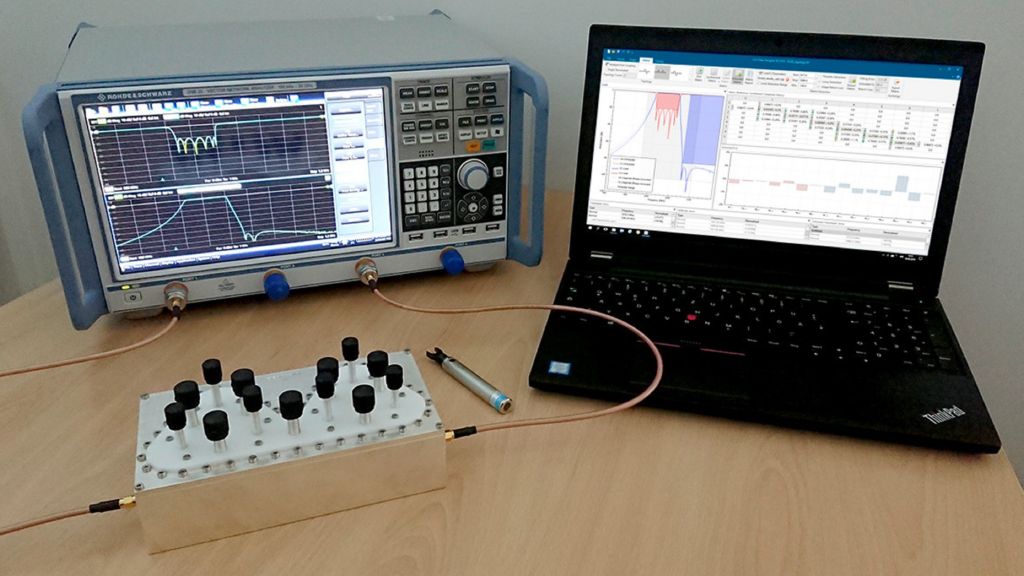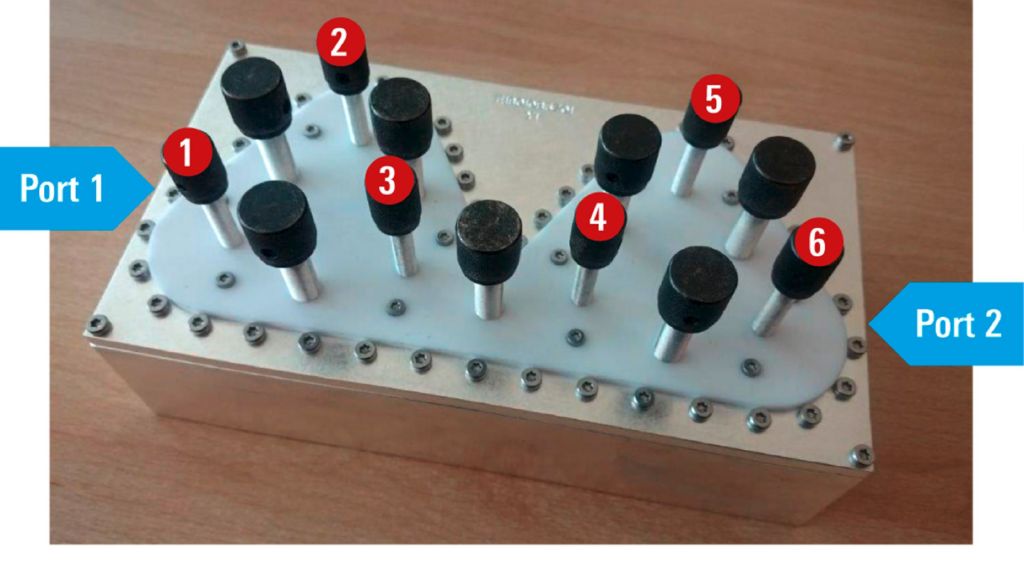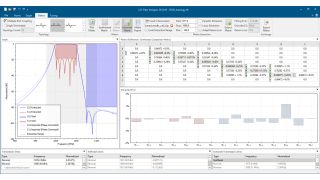Rohde & Schwarz solution
For real-world tuning, CST Studio Suite® supports USB, socket and Ethernet connections for a wide range of Rohde & Schwarz vector network analyzers. The R&S®ZNB is the leading vector network analyzer for production environments with a focus on speed, dynamic range and ease of operation. It combines high measurement accuracy with exceptional speed – better than 5 μs per point. This enables short sweep times, e.g. 4 ms for 401 points. Furthermore, the R&S®ZNB vector network analyzer combines high power handling capacity with high sensitivity and low trace noise. The R&S®ZNB base unit provides typically 140 dB dynamic range (at 10 Hz IF bandwidth), which outperforms other, comparable products on the market. Optional dynamic range enhancements deliver a dynamic range as high as 150 dB (real dynamic range without receivers going into compression at low transmission coefficients).
Fully integrated and easy to use
There are four steps to tune a filter:
- Calibrate the R&S®ZNB vector network analyzer and perform S-parameter measurements on the DUT
- Establish a remote connection between CST Filter Designer 3D running on a PC and the R&S®ZNB vector network analyzer. The software automatically reads the measured data in realtime
- Based on the selected filter topology, the software extracts a coupling matrix from the measured S-parameters
- Error bars indicate to what extent couplings and selfresonances are detuned. This provides the necessary information to optimize the filter hardware through its tuning mechanisms such as screws, variable capacitors and varactor diodes.
The filter model was designed with CST Filter Designer 3D and simulated with CST Studio Suite®. Given an accurate manufacturing process, the same result will be obtained from real measurements with the R&S®ZNB when the hardware is tuned to match the simulated coupling matrix.
The CST Filter Designer 3D environment is shown in the screenshot below, with the measured S-parameters read from the R&S®ZNB. The error bars indicate to what extent each matrix element deviates from the optimal tuning.













